WELCOME TO BRITTA VON ZWEIGBERGK’S OFFICIAL SITE

Britta von Zweigbergk has lived in Kent for many years. Despite the Swedish connections attached to her name she is a long standing self confessed Anglophile.
Now in her seventies and with more time on her hands she is able to pursue her own small practice as an artist and writer. She is very interested in social history, particularly the history of Asylums - having worked in one for a number of years, during which time she amassed an extensive collection of photographs, artworks and writings from those who used the art therapy department at Bexley Hospital between 1973 - 1996, including the artist Cynthia Pell. She is currently attempting to put these in some sort of order and possibly showing a selection to a wider public through exhibitions. Examples can be found on this website and are updated on a yearly basis.
Now in her seventies and with more time on her hands she is able to pursue her own small practice as an artist and writer. She is very interested in social history, particularly the history of Asylums - having worked in one for a number of years, during which time she amassed an extensive collection of photographs, artworks and writings from those who used the art therapy department at Bexley Hospital between 1973 - 1996, including the artist Cynthia Pell. She is currently attempting to put these in some sort of order and possibly showing a selection to a wider public through exhibitions. Examples can be found on this website and are updated on a yearly basis.
She also kept a work journal of daily life in the hospital, particularly the art therapy department and other units like Ashdown (Drug Dependency Unit ) And E1, the locked
ward.
A Blog updating these entries on a very regular basis, starting from the winter of 1984 is available online.
She was pleased to re establish connections and to be asked to be one of the Trustees for Centrepieces (www.centrepieces.org ) in the autumn of 2014. Centrepieces is an Arts Organisation which had strong connections with the art therapy department in Bexley Hospital and was formed three years after the art therapy department closed in November 1996. The early members almost all, without exception had attended the open sessions at Bexley Hospital or had some connection.
Centrepieces was originally set up by a group of artists with a Millennium award of £5000 from the National Lottery. It exists to promote recovery and creativity through the artsand presents opportunities for people to participate in community projects and to exhibit and sell their work. It also holds workshops, forums, a yearly auction and studio groups. Photography and creative writing are also encouraged and there are plans to renew longstanding connections with music and the reforming of a group.
With CIO status achieved early in 2015, Centrepieces is moving ahead with exciting ideas for exhibitionsand aims to build upon its established workshops and studio activities. It is also seekingcloser working with others with similar interests. A new website is being introduced and Centrepieces is now on Facebook. It is very much a question of watch this space!
Britta also finds time to be involved with SEOS (South East Open Studios, www.seos-art.com) and has opened her studio to the public in past years and at the present time maintains a web page on the SEOS website.
A continuing link with the ‘What If Gallery‘ in Dartford, Kent is also maintained. The Gallery is a unique facility for those with an interest and passion for art. They offer exhibitions at a very reasonable rate as well as hanging opportunities. Britta has become a Friend of the Gallery and has been very impressed by their openness and their enthusiasm to bring art to the widest number of people. She has seen the success of their popular workshops during the week and would thoroughly recommend visiting the Gallery whenever in Dartford, There is always something thought provoking and memorable to see.
She still retains links to the Folkestone area where she spent her teenage years and attended Folkestone and Dover Schools of Art as well as Saint Martins, Charing Cross Road. She is a long distance member of the Folkestone Writers Group (folkestone writers.wordpress.com) and contributed to The FOLKESTONE 2015 Anthology ( ISBN 978-0-9551952-6-6. to order copies of this book and copies of the 2016 and 17 Anthologies please contact editor john.sussams@gmail.com).
She also supports the National and Local MIND Association (www.dgsmind.co.uk) and is particularly interested in the role of carers, being very involved in supporting her daughters independence in the community. She is disturbed by the local reduction in mental health services due to lack of funding and sees an opportunity for voluntary organisations to step in to offer support to those with long term mental health problems . The present Community Mental Health Team in the Dartford , Gravesham and Swanley area offers a skeleton service and is maintained by a small number of dedicated professionals who do their best in a difficult financial situation. There is a pressing need for local and voluntary organisations to step and fill the gap in local resources.
She has become a registered volunteer for Carers First in Kent and Medway (wwwcarersfirst.org.uk/ 0300 303 1555) and is committed to a monthly Carers Support Group which meets at the Heritage Centre in Hextable on the second Tuesday of each month. It began as a local Mind group and evolved from this into a carer led group under the protective umbrella of Carers First, who support, contribute and fund the venue. The group hopes to build upon its status as a a local facility for those who care for a relative or partner with mental health problems. It offers support in a warm and informal atmosphere and gains much from shared experiences.. Connections and input into Carers First has grown over the last year and stems from shared concerns over the paucity of support for carers . She continues to be disturbed by reductions in local mental health services in the Gravesham area and would like to do more to bring these concerns to public notice.
She moved to Swanley in the 1960’s and although at the time not intending to stay too long, finds herself still there! A small town and civil parish n the Sevenoaks area, Kent, Swanley rests on the London/Kent border and despite its close association with Sevenoaks is under the postal code of the London Borough of Bromley. It is not without its quota of distinguished ex residents - Allan Knott - Kent and England cricketer was brought up in the town and attended Swanley School (as it was then called!) as did Mark Steel, English Socialist, columnist, author and comedian. Swanley has even had its own pop star - Crispian St, Peters, whose two notable top ten hits were ‘You were always in my Mind‘ and ‘The Pied Piper‘.
Originally built on either side of the A20 before the M25 existed, she has vague memories of passing through it en route to the galleries from Folkestone Art School and of its then instantly underwhelming impression on her. Little did she think she would end up as a long term resident many years later.
One of the advantages of staying in a place a long time however is a gradual familiarity that becomes very comfortable and eventually becomes a distinct plus.
Swanley’s population for instance has a down to earth kindness and solidarity which she has come to appreciate, also a prosaic and stoic approach to life and its general difficulties. This has proved helpful in occasional times of crisis. She finds she likes the mix of urban and rural which co-incides for her own periodic hankering for the possibility of temporary escape of which there are many opportunities in the area. She has finally grown into the place and intends to continue enjoying it as long as possible. She thoroughly endorses a maxim she heard recently ‘Don’t die until you’re dead’. Excellent advice!
A Blog updating these entries on a very regular basis, starting from the winter of 1984 is available online.
She was pleased to re establish connections and to be asked to be one of the Trustees for Centrepieces (www.centrepieces.org ) in the autumn of 2014. Centrepieces is an Arts Organisation which had strong connections with the art therapy department in Bexley Hospital and was formed three years after the art therapy department closed in November 1996. The early members almost all, without exception had attended the open sessions at Bexley Hospital or had some connection.
Centrepieces was originally set up by a group of artists with a Millennium award of £5000 from the National Lottery. It exists to promote recovery and creativity through the artsand presents opportunities for people to participate in community projects and to exhibit and sell their work. It also holds workshops, forums, a yearly auction and studio groups. Photography and creative writing are also encouraged and there are plans to renew longstanding connections with music and the reforming of a group.
With CIO status achieved early in 2015, Centrepieces is moving ahead with exciting ideas for exhibitionsand aims to build upon its established workshops and studio activities. It is also seekingcloser working with others with similar interests. A new website is being introduced and Centrepieces is now on Facebook. It is very much a question of watch this space!
Britta also finds time to be involved with SEOS (South East Open Studios, www.seos-art.com) and has opened her studio to the public in past years and at the present time maintains a web page on the SEOS website.
A continuing link with the ‘What If Gallery‘ in Dartford, Kent is also maintained. The Gallery is a unique facility for those with an interest and passion for art. They offer exhibitions at a very reasonable rate as well as hanging opportunities. Britta has become a Friend of the Gallery and has been very impressed by their openness and their enthusiasm to bring art to the widest number of people. She has seen the success of their popular workshops during the week and would thoroughly recommend visiting the Gallery whenever in Dartford, There is always something thought provoking and memorable to see.
She still retains links to the Folkestone area where she spent her teenage years and attended Folkestone and Dover Schools of Art as well as Saint Martins, Charing Cross Road. She is a long distance member of the Folkestone Writers Group (folkestone writers.wordpress.com) and contributed to The FOLKESTONE 2015 Anthology ( ISBN 978-0-9551952-6-6. to order copies of this book and copies of the 2016 and 17 Anthologies please contact editor john.sussams@gmail.com).
She also supports the National and Local MIND Association (www.dgsmind.co.uk) and is particularly interested in the role of carers, being very involved in supporting her daughters independence in the community. She is disturbed by the local reduction in mental health services due to lack of funding and sees an opportunity for voluntary organisations to step in to offer support to those with long term mental health problems . The present Community Mental Health Team in the Dartford , Gravesham and Swanley area offers a skeleton service and is maintained by a small number of dedicated professionals who do their best in a difficult financial situation. There is a pressing need for local and voluntary organisations to step and fill the gap in local resources.
She has become a registered volunteer for Carers First in Kent and Medway (wwwcarersfirst.org.uk/ 0300 303 1555) and is committed to a monthly Carers Support Group which meets at the Heritage Centre in Hextable on the second Tuesday of each month. It began as a local Mind group and evolved from this into a carer led group under the protective umbrella of Carers First, who support, contribute and fund the venue. The group hopes to build upon its status as a a local facility for those who care for a relative or partner with mental health problems. It offers support in a warm and informal atmosphere and gains much from shared experiences.. Connections and input into Carers First has grown over the last year and stems from shared concerns over the paucity of support for carers . She continues to be disturbed by reductions in local mental health services in the Gravesham area and would like to do more to bring these concerns to public notice.
She moved to Swanley in the 1960’s and although at the time not intending to stay too long, finds herself still there! A small town and civil parish n the Sevenoaks area, Kent, Swanley rests on the London/Kent border and despite its close association with Sevenoaks is under the postal code of the London Borough of Bromley. It is not without its quota of distinguished ex residents - Allan Knott - Kent and England cricketer was brought up in the town and attended Swanley School (as it was then called!) as did Mark Steel, English Socialist, columnist, author and comedian. Swanley has even had its own pop star - Crispian St, Peters, whose two notable top ten hits were ‘You were always in my Mind‘ and ‘The Pied Piper‘.
Originally built on either side of the A20 before the M25 existed, she has vague memories of passing through it en route to the galleries from Folkestone Art School and of its then instantly underwhelming impression on her. Little did she think she would end up as a long term resident many years later.
One of the advantages of staying in a place a long time however is a gradual familiarity that becomes very comfortable and eventually becomes a distinct plus.
Swanley’s population for instance has a down to earth kindness and solidarity which she has come to appreciate, also a prosaic and stoic approach to life and its general difficulties. This has proved helpful in occasional times of crisis. She finds she likes the mix of urban and rural which co-incides for her own periodic hankering for the possibility of temporary escape of which there are many opportunities in the area. She has finally grown into the place and intends to continue enjoying it as long as possible. She thoroughly endorses a maxim she heard recently ‘Don’t die until you’re dead’. Excellent advice!










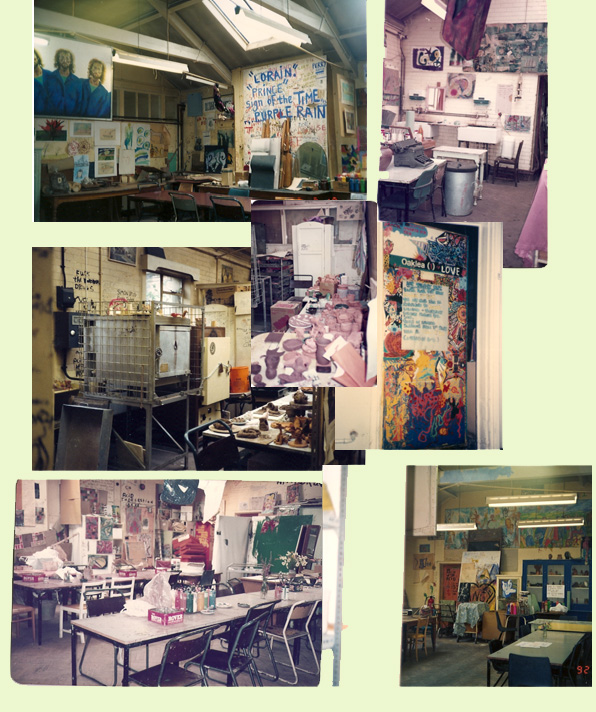


 Born ten days before war was declared in September 1939 and her father joined the RAF, Britta von Zweigbergk spent the first few months of life sleeping in a drawer in her paternal grandparents flat in Hove, near Brighton.
Born ten days before war was declared in September 1939 and her father joined the RAF, Britta von Zweigbergk spent the first few months of life sleeping in a drawer in her paternal grandparents flat in Hove, near Brighton.
 It was an unusual household - the tall elegant buildings having been transformed from middle class living accommodation, with basement flats for servants pre WW2, to tenement dwellings by 1946, each floor housing a separate but open flat, connected by landings.
It was an unusual household - the tall elegant buildings having been transformed from middle class living accommodation, with basement flats for servants pre WW2, to tenement dwellings by 1946, each floor housing a separate but open flat, connected by landings.
 Maida Vale, with its proximity to the Regents Canal and Little Venice had much to offer. It was a place that was home to a wide spectrum of social classes and had survived post war chaos in a memorable bohemian sort of way. Typical was the artist Edward Ardizzone who lived next door in Elgin Avenue, - his studio looking out along the main tree lined thoroughfare with a good view of Shirland Road and the United Dairies.
Maida Vale, with its proximity to the Regents Canal and Little Venice had much to offer. It was a place that was home to a wide spectrum of social classes and had survived post war chaos in a memorable bohemian sort of way. Typical was the artist Edward Ardizzone who lived next door in Elgin Avenue, - his studio looking out along the main tree lined thoroughfare with a good view of Shirland Road and the United Dairies.
 School holidays were made memorable by often spending them with her paternal grandparents in Hove near Brighton. She spent some time in India and Burma with her parents as a ten and eleven year old and enjoyed the time without any conventional schooling at all. Lessons learned through the observation of life around her however remained very useful throughout the years that followed.
School holidays were made memorable by often spending them with her paternal grandparents in Hove near Brighton. She spent some time in India and Burma with her parents as a ten and eleven year old and enjoyed the time without any conventional schooling at all. Lessons learned through the observation of life around her however remained very useful throughout the years that followed.
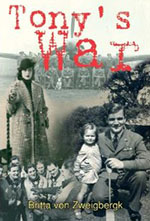
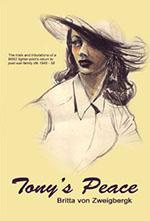
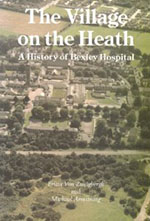
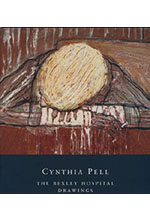








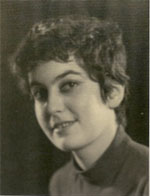 Cynthia Pell was born with a prestigious talent, winning a national art competition in her last year at school. She was a student at Bournemouth College of Art and then Camberwell and was remembered at the latter for being the most gifted student of her year.
Cynthia Pell was born with a prestigious talent, winning a national art competition in her last year at school. She was a student at Bournemouth College of Art and then Camberwell and was remembered at the latter for being the most gifted student of her year.
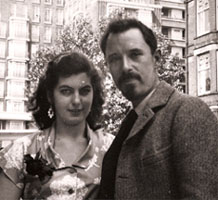
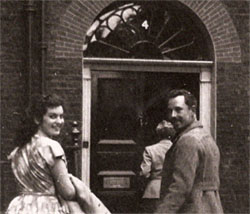
 Years later when the struggle to re establish her reputation had begun -
through the efforts of the artists Evelyn Williams, Natalie Dower and Paula Rego and a retrospective exhibition of her then known work was held at the Orleans House Gallery in Twickenham,
John McEwen wrote in the Sunday Telegraph, August 15th 1999;
Years later when the struggle to re establish her reputation had begun -
through the efforts of the artists Evelyn Williams, Natalie Dower and Paula Rego and a retrospective exhibition of her then known work was held at the Orleans House Gallery in Twickenham,
John McEwen wrote in the Sunday Telegraph, August 15th 1999;
 ‘Pell destroyed much of her work and a lot of what remained has been lost, but the power, tenderness and physicality of these surviving drawings and paintings, both of people and landscape is undeniable’.
‘Pell destroyed much of her work and a lot of what remained has been lost, but the power, tenderness and physicality of these surviving drawings and paintings, both of people and landscape is undeniable’.
 Reviewing the same exhibition, John Russell Taylor in the Times wrote (12th December 2000);
Reviewing the same exhibition, John Russell Taylor in the Times wrote (12th December 2000);

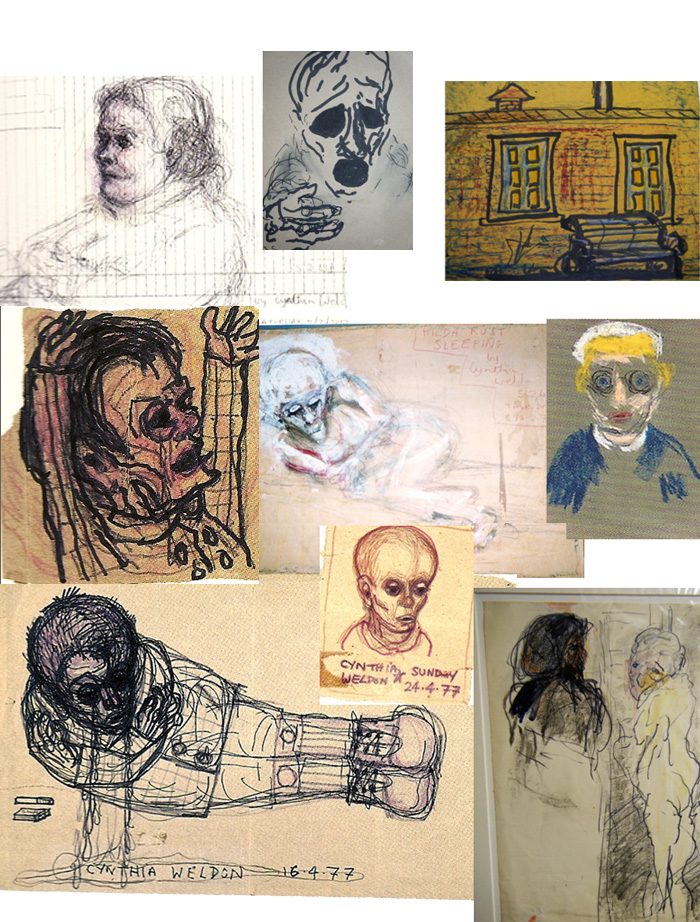
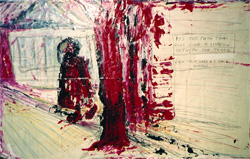 There were individuals, already patients in the hospital - in other wards - who found themselves on E1, the locked ward, on a relatively regular basis. ABL or PB (see Wards and Departments /E1) and Cynthia Pell. Cynthia’s regular ward during the first two years of her admission was R1 (The James Maclean Unit. (see ‘The Village on the Heath) and although very attached to R1 after the first few traumatic days of arrival she often got herself quite comfortable on the locked ward.
There were individuals, already patients in the hospital - in other wards - who found themselves on E1, the locked ward, on a relatively regular basis. ABL or PB (see Wards and Departments /E1) and Cynthia Pell. Cynthia’s regular ward during the first two years of her admission was R1 (The James Maclean Unit. (see ‘The Village on the Heath) and although very attached to R1 after the first few traumatic days of arrival she often got herself quite comfortable on the locked ward.
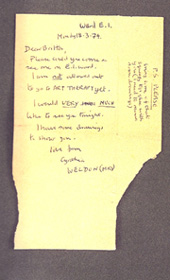 12th November 1975
12th November 1975
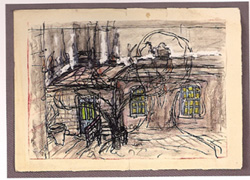 Monday 24th May 1976
Monday 24th May 1976
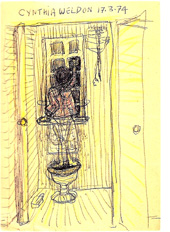 Wednesday 2nd June 1976
Wednesday 2nd June 1976
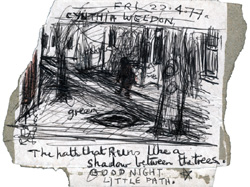 Monday am 14th June 1976
Monday am 14th June 1976
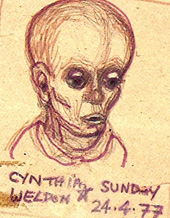 Cynthia often drew the view from the window in E1. She particularly liked the’ little path that ran like a shadow between
the trees’ and did several versions of this in a variety of media.
Cynthia often drew the view from the window in E1. She particularly liked the’ little path that ran like a shadow between
the trees’ and did several versions of this in a variety of media.







 Like my father he had a capacity for playing with small children and I loved my rides on his shoulders from my grandparents comfortable flat in Hove, near Brighton down, past Brunswick Square to the sea front.
Like my father he had a capacity for playing with small children and I loved my rides on his shoulders from my grandparents comfortable flat in Hove, near Brighton down, past Brunswick Square to the sea front.
 Anna had sent him regular parcels through the Red Cross. As courtship, socks and cakes were part of a wartime expediency and were the currency of romance. As symbols and metaphors they replaced the more usual getting to know you rituals of courtship and engagement with a language that spoke symbolically of warmth, containment and nourishment - all in short supply in POW camps and seized upon when they arrived via the help of the Red Cross with a gratitude that had the possibility of being transformed into love.
Anna had sent him regular parcels through the Red Cross. As courtship, socks and cakes were part of a wartime expediency and were the currency of romance. As symbols and metaphors they replaced the more usual getting to know you rituals of courtship and engagement with a language that spoke symbolically of warmth, containment and nourishment - all in short supply in POW camps and seized upon when they arrived via the help of the Red Cross with a gratitude that had the possibility of being transformed into love.
